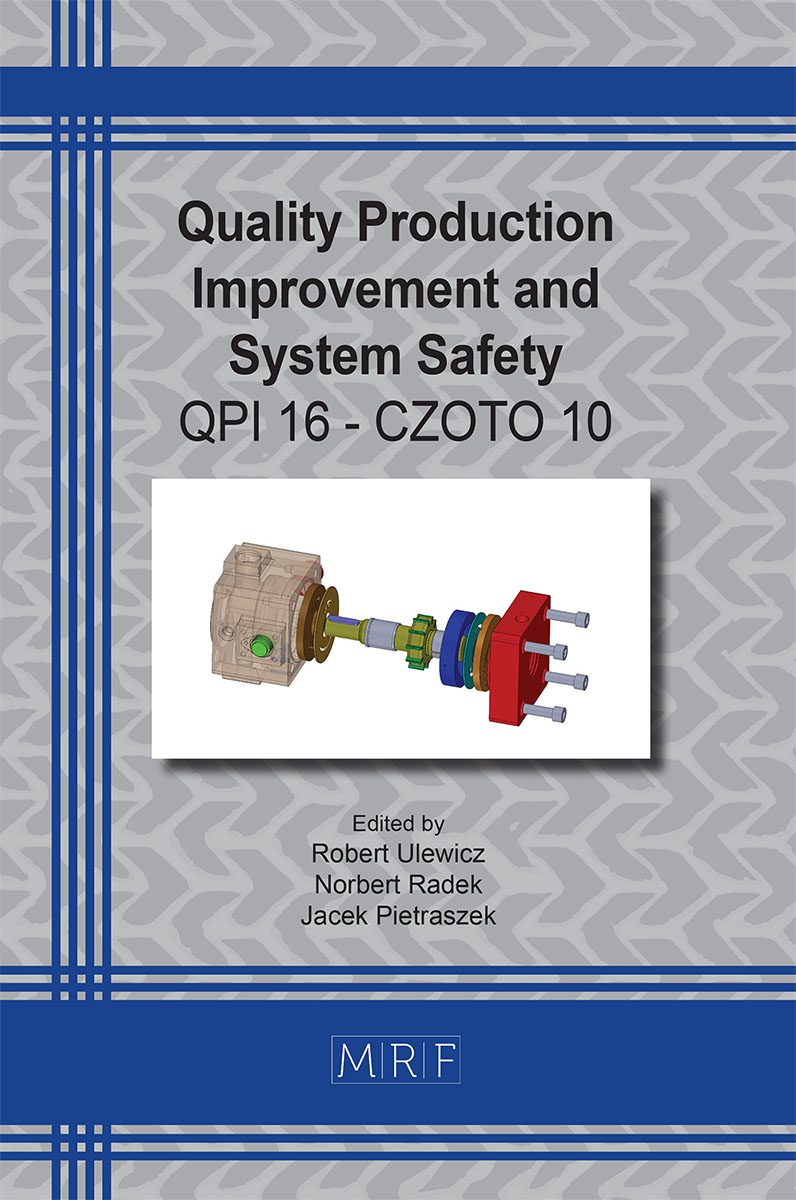Assessment of the Application of Lumpy Steel Slag as an Aggregate Replacement in Concrete
HARWAT Artur, RESPONDEK Zbigniew
download PDFAbstract. The need to protect the Earth’s resources necessitates pro-ecological activities. One of the aspects of these activities is the rational management of post-production and post-consumer waste. One of the materials whose production significantly pollutes the natural environment is concrete. On the other hand, the analysis of the literature carried out in the work showed that it is a material that can absorb a significant amount of processed waste used as a substitute for cement or aggregate. These are polymer materials of various origins, residues from biomass combustion and, above all, steel slag, which has long been used in construction in various forms. One of the types of this material is lumpy steel slag, which has been used for years mainly in road construction as a replacement for crushed stone in the construction of the road base. The paper presents instrumental tests of the influence of the lump slag content used as a replacement for basalt aggregate on selected parameters of concrete (compressive strength, water absorption, volume density). The research showed that such a modification of the mixture composition does not significantly change the tested parameters. The lump slag can therefore be successfully used in the production of normal and heavy concrete.
Keywords
Waste Management, Recycling in Construction, Cement Concrete, Aggregate Replacement, Steel Slag
Published online 9/1/2023, 7 pages
Copyright © 2023 by the author(s)
Published under license by Materials Research Forum LLC., Millersville PA, USA
Citation: HARWAT Artur, RESPONDEK Zbigniew, Assessment of the Application of Lumpy Steel Slag as an Aggregate Replacement in Concrete, Materials Research Proceedings, Vol. 34, pp 139-145, 2023
DOI: https://doi.org/10.21741/9781644902691-17
The article was published as article 17 of the book Quality Production Improvement and System Safety
![]() Content from this work may be used under the terms of the Creative Commons Attribution 3.0 license. Any further distribution of this work must maintain attribution to the author(s) and the title of the work, journal citation and DOI.
Content from this work may be used under the terms of the Creative Commons Attribution 3.0 license. Any further distribution of this work must maintain attribution to the author(s) and the title of the work, journal citation and DOI.
References
[1] N. Brycht. Construction Waste Management in Rural Areas of the Czestochowa District in the Aspect of Environmental Safety, Quality Production Improvement, R. Ulewicz, B. Hadzima (Eds.) 2(1) (2020) 60-68. https://doi.org/10.2478/cqpi-2020-0008
[2] M. Tomov, C. Velkoska. Contribution of the quality costs to sustainable development, Prod. Eng. Arch. 28 (2022) 164-171. https://doi.org/10.30657/pea.2022.28.19
[3] K. Kishore, N. Gupta. Application of domestic & industrial waste materials in concrete: A review, Mater. Today: Proc. 26 (2020) 2926-2931. https://doi.org/10.1016/j.matpr.2020.02.604
[4] B. Dębska, J. Krasoń, L. Lichołaj. The evaluation of the possible utilization of waste glass in sustainable mortars, Construction of Optimized Energy Potential 9(2) (2021) 7-15. https://doi.org/10.17512/bozpe.2020.2.01
[5] Y.W. Choi et al. Effects of waste PET bottlers aggregate on the properties of concrete, Cem. Concr. Res. 35 (2005) 776–781. https://doi.org/10.1016/j.cemconres.2004.05.014
[6] P. Helbrych. Effect of Dosing with Propylene Fibers on the Mechanical Properties of Concretes, Construction of Optimized Energy Potential 10(2) (2021) 39-44. https://doi.org/10.17512/bozpe.2021.2.05
[7] M. Chaudhary, V. Srivastava, V. Agarwal. Effect of waste low density polyethylene on mechanical properties of concrete, J. Acad. Ind. Res. 3(3) (2014) 123-126.
[8] A. Herki, J. Khatib, E. Negim. Lightweight concrete made from waste polystyrene and fly ash, World Appl. Sci. J. 21 (2013) 1356-1360. https://doi.org/10.5829/idosi.wasj.2013.21.9.20213
[9] N. Holmes, K. Dunne, J. O’Donnell. Longitudinal shear resistance of composite slabs containing crumb rubber in concrete toppings, Constr. Build. Mater. 55 (2014) 365-378. https://doi.org/10.1016/j.conbuildmat.2014.01.046
[10] A. Pietrzak, M. Ulewicz. Properties and Structure of Concretes Doped with Production Waste of Thermoplastic Elastomers from the Production of Car Floor Mats, Materials 14 (2021) art.872. https://doi.org/10.3390/ma14040872
[11] E. Aprianti. A huge number of artificial waste material can be supplementary cementitious material (SCM) for concrete production – a review part II, J. Clean. Prod. 142 (2017) 4178-4194. https://doi.org/10.1016/j.jclepro.2015.12.115
[12] I.M. Aslam et al. Benefits of using blended waste coarse lightweight aggregates in structural lightweight aggregate concrete, J. Clean. Prod. 119 (2016) 108-117. https://doi.org/10.1016/j.jclepro.2016.01.071
[13] J. Jura, M. Ulewicz. Assessment of the Possibility of Using Fly Ash from Biomass Combustion for Concrete, Materials 14 (2021) art.6708. https://doi.org/10.3390/ma14216708
[14] J.M. Paris et al. A review of waste products utilized as supplements to Portland cement in concrete, J. Clean. Prod. 121 (2016) 1-18. https://doi.org/10.1016/j.jclepro.2016.02.013
[15] Z. Giergiczny. Właściwości popiołu lotnego a trwałość betonu, Budownictwo, Technologie, Architektura 3 (2007) 44-48.
[16] E. Ganjian, G. Jallul, H. Sadeghi-Pouya. Using waste materials and by-products to produce concrete paving blocks, Constr. Build. Mater. 77 (2015) 270-275. https://doi.org/10.1016/j.conbuildmat.2014.12.048
[17] T. Lis, K. Nowacki. Pro-ecological possibilities of using metallurgical waste in the production of aggregates, Prod. Eng. Arch. 28 (2022) 252-256. https://doi.org/10.30657/pea.2022.28.31
[18] A.M. Neville. Properties of Concret, Pearson, Harlow, 2011. ISBN 978-0273755807












